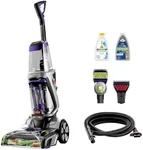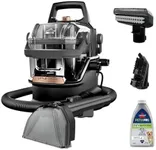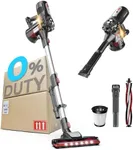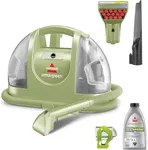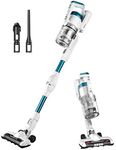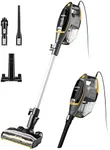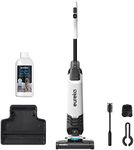Buying Guide for the Best Bissell Vacuum Cleaners
Choosing the right vacuum cleaner can make a significant difference in maintaining a clean and healthy home. Bissell offers a variety of vacuum cleaners, each designed to meet different cleaning needs and preferences. To find the best fit for you, it's important to understand the key specifications and how they align with your specific requirements. Here are some key specs to consider when selecting a Bissell vacuum cleaner.Type of Vacuum CleanerVacuum cleaners come in various types, including upright, canister, stick, handheld, and robotic. Upright vacuums are great for deep cleaning carpets and large areas, while canister vacuums offer flexibility and are good for hard floors and tight spaces. Stick vacuums are lightweight and easy to maneuver, ideal for quick clean-ups. Handheld vacuums are perfect for small messes and hard-to-reach areas. Robotic vacuums provide convenience by cleaning autonomously. Choose the type based on the areas you need to clean and your preference for convenience and maneuverability.
Suction PowerSuction power determines how effectively a vacuum can pick up dirt and debris. Higher suction power is essential for deep cleaning carpets and removing pet hair, while lower suction power may suffice for hard floors and light cleaning tasks. Look for vacuums with adjustable suction settings to cater to different surfaces and cleaning needs.
Filtration SystemThe filtration system is crucial for trapping dust, allergens, and other particles, ensuring cleaner air in your home. HEPA filters are highly effective and recommended for households with allergy sufferers or pets. Standard filters may be adequate for general cleaning. Consider your household's sensitivity to dust and allergens when choosing the filtration system.
Bagged vs. BaglessBagged vacuums use disposable bags to collect dirt, which can be more hygienic and reduce exposure to dust when emptying. Bagless vacuums use a dustbin that needs to be emptied regularly, which can be more cost-effective and environmentally friendly. Choose based on your preference for convenience and maintenance.
Corded vs. CordlessCorded vacuums offer consistent power and are suitable for extended cleaning sessions, while cordless vacuums provide greater mobility and ease of use, ideal for quick clean-ups and smaller spaces. Consider the size of the area you need to clean and your preference for mobility when deciding between corded and cordless.
Weight and ManeuverabilityThe weight and maneuverability of a vacuum cleaner affect how easy it is to use, especially if you have multiple floors or need to carry it around. Lighter vacuums are easier to handle and store, while heavier models may offer more power and features. Consider your physical ability and the layout of your home when choosing the weight and maneuverability.
Attachments and AccessoriesAttachments and accessories enhance the versatility of a vacuum cleaner, allowing you to clean various surfaces and hard-to-reach areas. Common attachments include crevice tools, upholstery brushes, and pet hair tools. Consider the specific cleaning tasks you need to perform and choose a vacuum with the appropriate attachments.
Noise LevelThe noise level of a vacuum cleaner can impact your comfort during use. Quieter models are preferable for households with young children, pets, or noise-sensitive individuals. Check the decibel rating if noise is a concern for you.
Maintenance and DurabilityRegular maintenance is necessary to keep your vacuum cleaner in good working condition. Consider the ease of cleaning filters, emptying dustbins, and replacing bags or parts. Durable models may have a higher initial cost but can save money in the long run. Choose a vacuum that balances ease of maintenance with durability.







